How to Install a Window
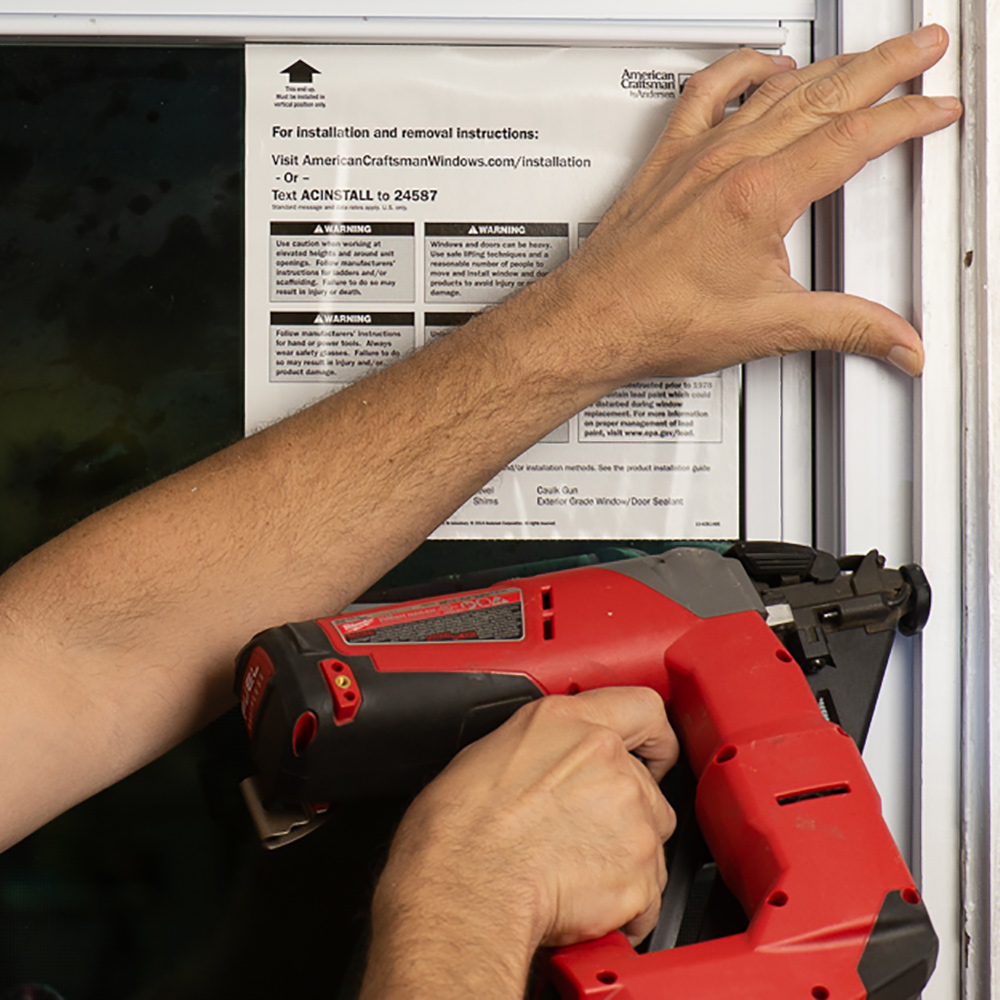
Last updated April 30, 2025
From helping with energy efficiency to framing a room in your home, windows provide protection and added style. When it's time to replace old windows in your current space, a few precautions and some simple steps will help you get the job done.
Read on for the general steps involved in window replacement. Learn how to measure, remove and install a remodel window.
Difficulty:
Intermediate
Duration:
Over 1 day
Table of Contents
Replacement Window Types
Measure the Window Opening
Remove the Existing Window
Prep and Dry Fit Window
Install the Remodel Window
Paint and Finish the Window
Replacement Window Types
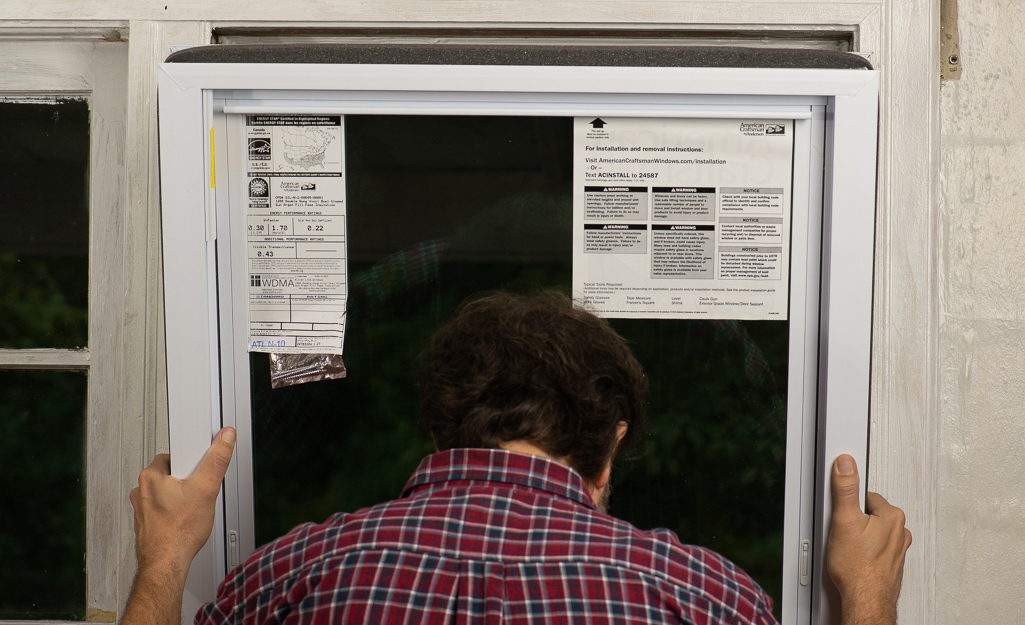
In general, windows come in two basic types: new construction and remodel.
- A new construction window will usually have a nailing flange to attach to a rough opening.
- A remodel window will be made to fit within the existing finished opening.
A remodel window is faster and easier to install but it will have less glass to let light in. The window itself is smaller on a remodel window vs a new construction window. This is because it’s designed to fit inside a finished opening with an existing window frame instead of a rough opening.
Tip: Refer to the instructions that came with your new windows for specific directions on installation.
Measure the Window Opening
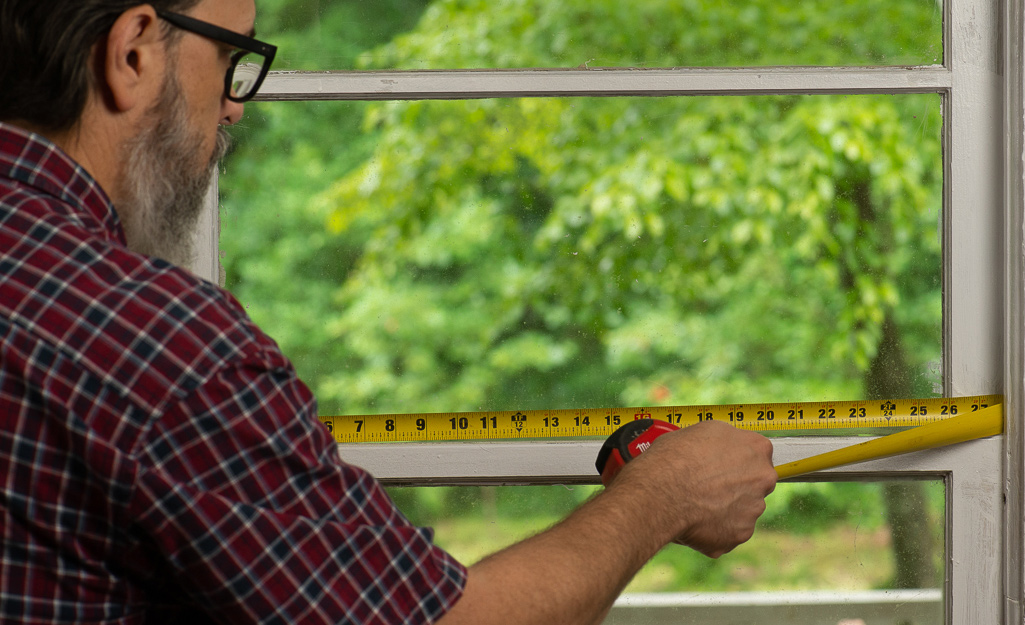
To get a good fit for your replacement window, you’ll need to measure the pocket opening. Take your time to carefully note the exact height and width of your window. Correct measurements now will save you from sanding the frame and adding filler strips later.
Here are some tips and terminology to know when measuring the window opening:
- Stop Moulding - This is the part that holds the window in place inside the frame.
- Frame Width - When you measure the width of the frame, be sure to go to the outside edge of the stop moulding.
- Frame Height - Measure the frame height from where the lower sash contacts the sill to where the upper sash touches the header.
Measure for replacement windows by following these steps:
- Start by measuring the height inside the existing frame in three places. Check the height in the middle of the window and on the left and right sides.
- Measure your width. Get measurements for the top, middle and bottom.
- Record your measurements.
- Use the smallest measurements for width and height to help choose your new window size.
Your new window needs to be about 3/4 inches smaller than your window opening. This is to keep you from needing to reframe the opening.
Remove the Existing Window
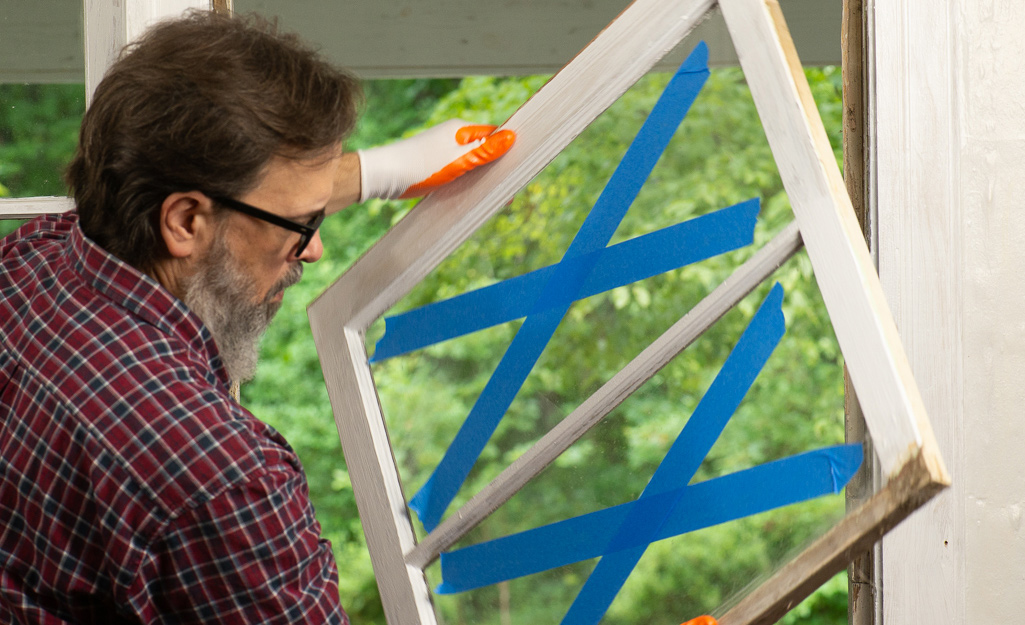
Before you continue with your window removal, ensure you have everything you need to complete the job. Check the new windows for damage, quantity and size.
When installing windows on the upper levels of your home, you may want to rent scaffolding. You’ll have more room to maneuver up there rather than on a ladder. Because windows are difficult to handle, find someone to help you when working above the first floor. Always wear eye protection and gloves when you replace window glass and fiberglass insulation.
Be careful once you remove the interior stop moulding. If the window wasn’t previously fastened in place properly, it could fall out without warning.
- You might have to cut through old paint or caulk with a utility knife to complete some steps.
- Remove interior stop moulding carefully because you may be able to reuse it.
- If you have thin, sharp metal channels around your window, use cut-resistant gloves to pry the metal loose from the frame. Then, pull it out when you remove the sashes.
- Remove the fasteners that are holding the old window to the frame.
- Lift out the old window. It will likely come out in two parts.
- Cut any balance lines or window weight connections.
- Remove the old balance system.
- Remove any fasteners that are sticking out.
- Clean the window opening thoroughly. Remove all the old caulk.
- Fill any holes in the surface and add insulation as needed.
- Inspect the blind stop (exterior stop moulding) to see if it needs to be replaced. If it’s damaged or decayed, replace it in the next step.
Tip: If you’re replacing a damaged window, be cautious and avoid jagged glass. Use painter's tape to cover any cracks to prevent shards from falling during the removal process. Cut-resistant gloves are a smart choice for working with glass.
Prep and Dry Fit Window
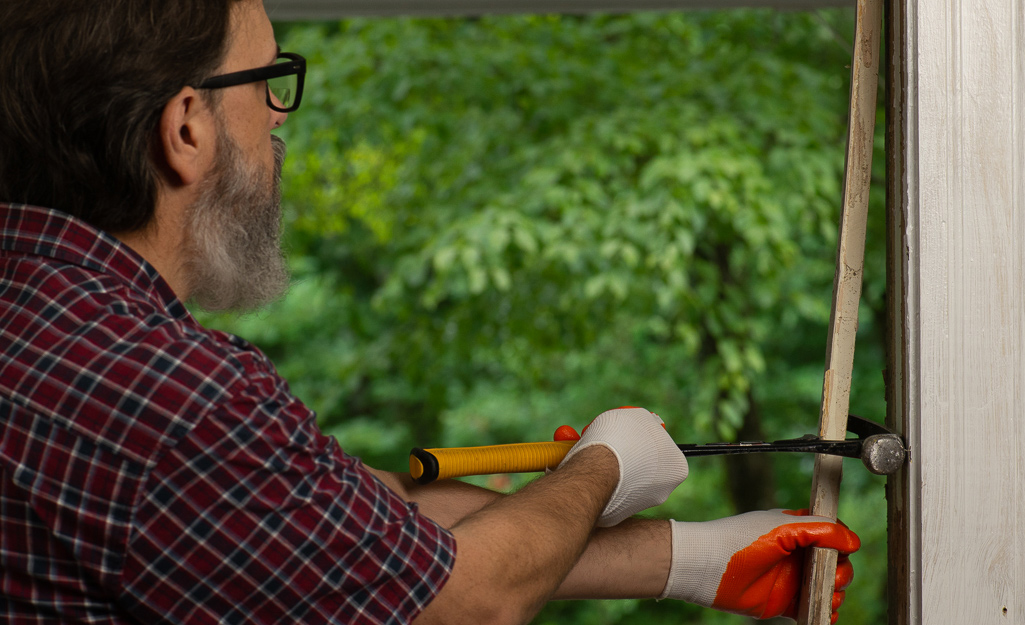
The window is out of the wall, so now you can check all remaining wood for structural damage.
- Replace any damaged areas.
- Install new blind stop moulding, also known as exterior stop moulding, if needed.
- Center the new window in the opening, supporting it with wood blocks and shims.
- Make sure the window is plumb. Level and adjust the shims if needed.
Install the Remodel Window
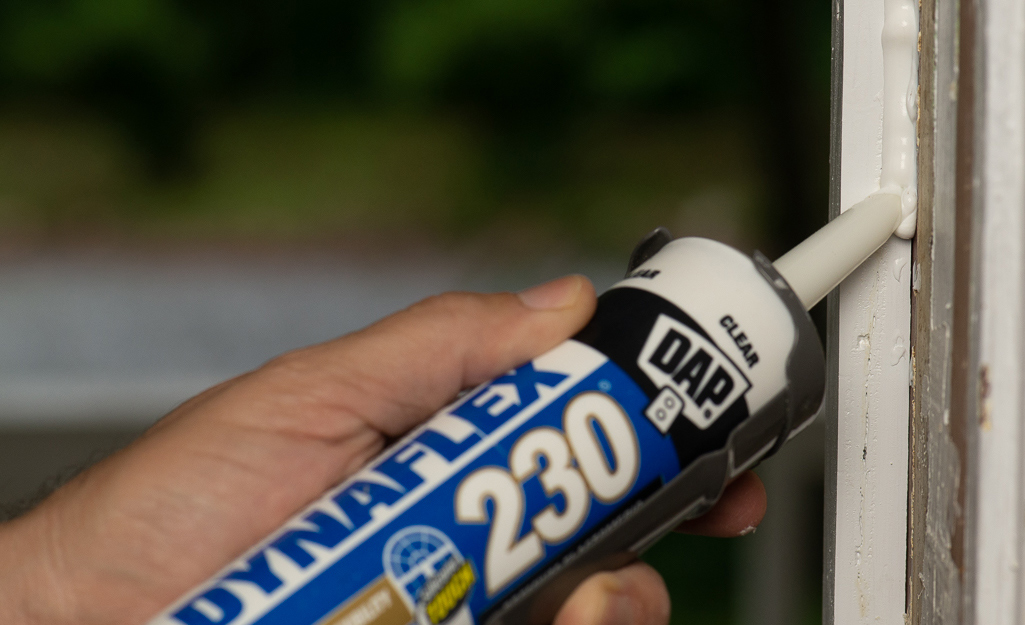
Once you’ve prepared your new remodel window and the old window frame, it’s time to install a window into that opening:
- Apply a bead of caulk to the inside face of the blind (exterior) stop moulding.
- Place the window into the opening, pressing it tightly against the caulk.
- Put shims where pre-drilled holes are to secure the window.
- Measure the window diagonals to check that the window is square. The measurements should be the same.
- If needed, adjust the fit with shims until the window is square.
- Drive screws into holes through the shims and into the frame.
- Trim the shims by scoring with a razor knife and breaking off flush with the window frame.
- Re-check that sashes are even and the window is level.
- Fill the gaps between the window jambs and the framing members with loosely packed fiberglass insulation.
- Install interior stop moulding with finishing nails.
Paint and Finish the Window
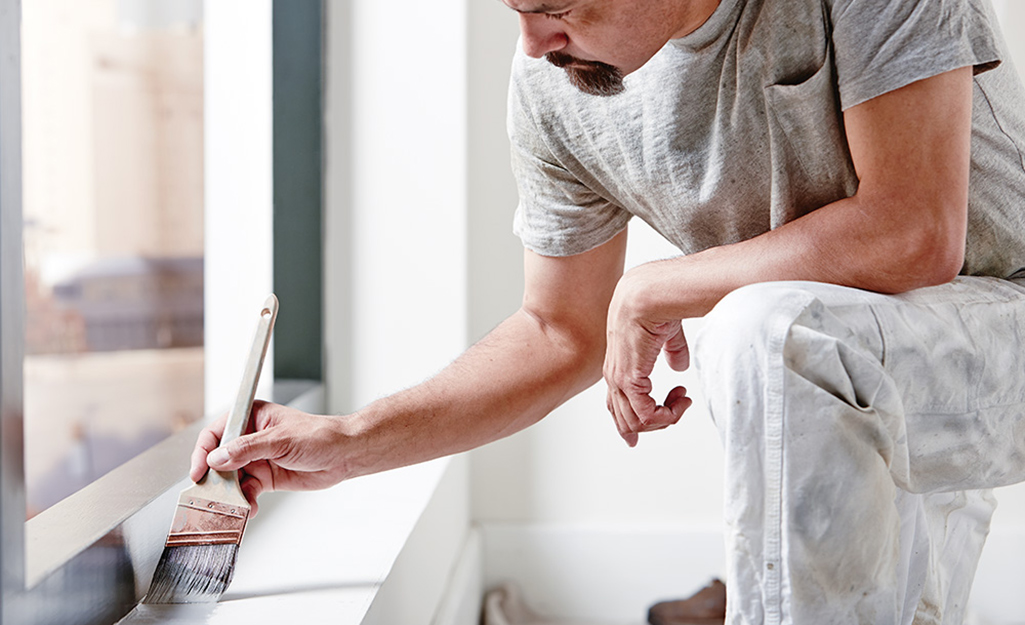
Now that you’ve installed the window, the hard part is done.
- When the caulk dries, paint to match the trim on the rest of your house.
- Once your window trim is painted, your new remodel window will blend right in with the rest of the house.
Tips and Tricks for Choosing Replacement Windows
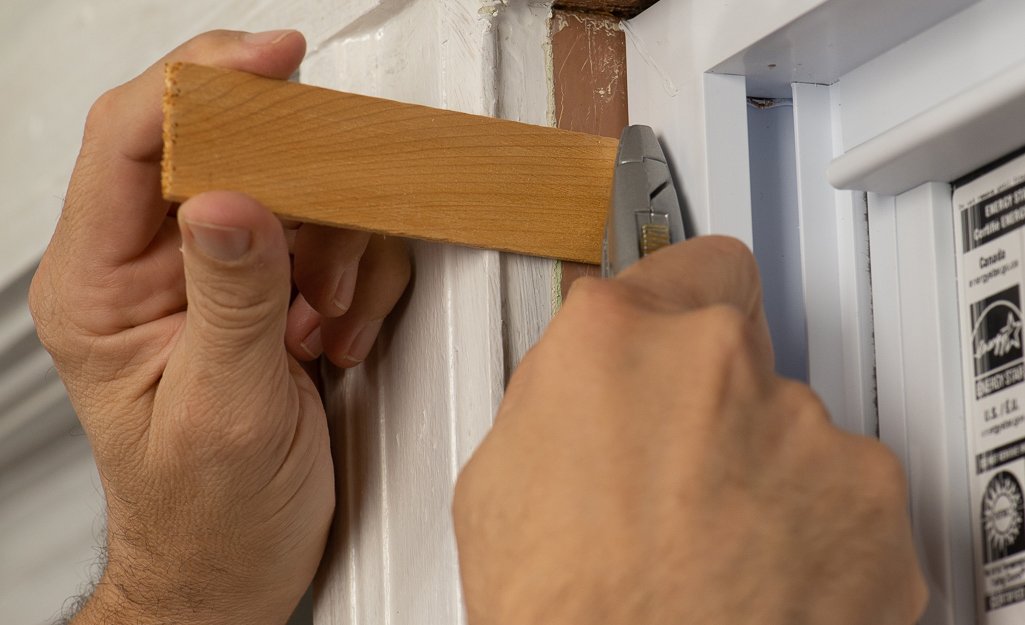
Windows will differ by material and design, so it's important to know what type of window you currently have and what type of window you are installing.
Here are a few tips to keep in mind when choosing replacement windows:
- Homeowners often opt for vinyl and metal windows because they have a nailing flange that attaches to your home to keep water out. The flange must be attached to the rough opening of a wall.
- Installing a new construction window in an existing home includes cleaning out the window reveals and removing siding or brick moulding. You many need to add more insulation and seal the new window.
- Keep the old windows in place until you have looked over the new ones for damage and checked their size to see that they fit.
Now that you understand the basics of window installation, you can replace or repair your existing windows. You may even want to install new doors to match. Consider a boom lift rental to reach your windows safely. Use once, then bring it back - no maintenance required and you won’t need to store it either. We also offer window installation services. For free design, purchase and installation help with windows and doors, call us any time between 9 a.m. - 9 p.m. EST at 1-833-HDAPRON (432-7766).

























